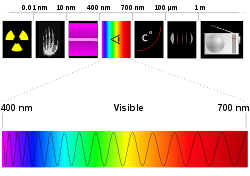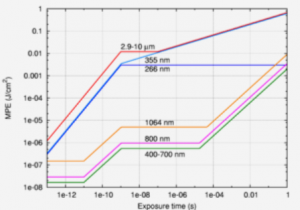Laser Safety — Are low emission lasers really safe?
As technology continues to make its way into our everyday lives, questions begin to arise about the safety of our new “toys.” I guess there will come a time when we are so saturated with new gimmicks that we will simply just hit the wall. At some point, there just won’t be any room in our daily routines for more gizmos.
But, for now we as a consuming public still thirst for the latest, greatest new technology. One of those technologies making its way into our lives in ways we don’t even appreciate is laser technology. Sure we have all been wowed by over the top laser light shows. Everyone has seen video of high intensity lasers utilized in industry to cut, shape, mold, weld and heat all sorts of materials. We’ve all heard about laser surgery. The question is, do you know that in our routine, every day lives we are virtually bombarded with laser emissions? Well, we are and most of us don’t even know it. They are scanning you, measuring you, sensing you and illuminating you? For the unlucky among us, they are measuring your speed as you drive!
Laser technology is simply light energy (electromagnetic radiation) that lives in a different frequency on the light spectrum. Light as we know it is a broad term that encompasses visible light as well as x-rays, microwave, infrared laser, ultraviolet laser etc. Laser is actually an acronym for, “Light Amplification by Stimulated Emission of Radiation.”

From left to right: Gamma x-rays, X-rays, ultraviolet rays, visible spectrum, infrared microwaves, radio waves.
How you make laser light is beyond the scope of this piece. For our purposes, there are two wavelengths of laser. Ultraviolet and infrared. Ultraviolet laser can be seen. Infrared laser cannot. If your eye is exposed to infrared laser, you don’t blink. So, if a technology that uses infrared laser, exposes you to that beam, you don’t have the ability to protect yourself.
Laser emissions in consumer products are regulated by the Federal Government through statutes enforced by the Food and Drug Administration. For those interested ANSI Z136 and UC and IEC 60825 set the standards.
Generally, the power of the laser and its ability to cause harm determines its classification. Lasers used in light shows, the military and in industry generally have great potential for harm and are heavily regulated. They can cause instant retinal damage and blindness. Some can burn skin. Low power lasers which are the ones used in most everyday consumer products are Class 1 lasers. They have not been proven to cause harm in the past. However, the more of these products that make their way into our everyday lives in different user environments, the more we learn about Class 1 lasers and their ability to cause harm.
Laser pointers are a good example. Most people have seen these cute little devices. They actually are very handy if you are giving a presentation and must stand far away from a large screen where your Power Point presentation is being displayed. But, some teen was able to buy one over the internet and while shining it in the mirror caused severe damage to his retina when the beam hit him in the eye from the reflection.
Where else can you find common lasers in your everyday life? The bar code scanner introduced in 1974 is a good example. We’ve all heard the beep, beep, beep of these scanners at the supermarket. It was probably the first commercial consumer application of the laser. Since that time, virtually every piece of electronics we buy incorporates laser technology. It’s how our remotes “talk” to our televisions, DVD players and radios. As a matter of fact, laser technology is the very foundation of CD-ROM, DVD and computer disk operations. Virtually every printer we use in everyday life is a “laser” printer.
Class 1 laser devices are required to display a sticker indicating it is in fact a class 1 device. By representing that to the consuming public, the manufacturer is claiming that the device is, “Safe under all conditions of normal use.” To establish this, the devices must be tested and certified as not emitting laser that exceeds the maximum permissible exposure (MPE).
But, how can we be sure that is true. Are all these devices tested for their ultimate use in real world applications or, do they simply stick a meter in front of the laser and measure its output? As we all know, how you actually use a device dictates how much exposure you will have to the laser not what a meter says. What if the device is designed for long term exposure? What if it is used in low light conditions? What if you are required to look directly into the laser beam? What if the manufacturer of the laser device is actually a Chinese subcontractor who doesn’t pay as much attention to quality control as others? Are young children more susceptible to laser than teens or adults?
These are all questions that come to my mind. Especially as I watch my kids immerse themselves in video and computer games and I watch around me and see all the infrared laser cameras scanning me at the office, bank, supermarket, retail store and hospital. It’s a question you should be asking yourselves especially since there is only so much laser emission you can avoid.
Share This



